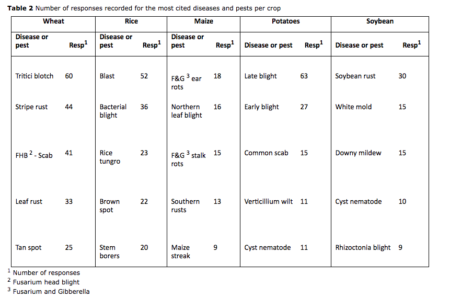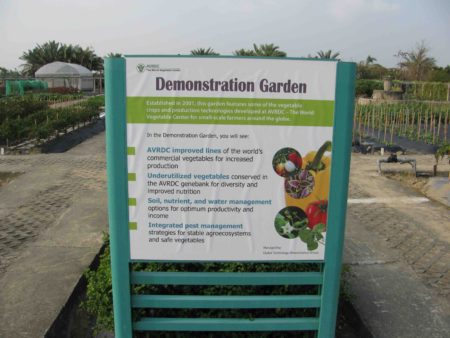Readers with a long memory will remember the Global Crop Loss Survey, which we blogged about here back in November. Just to remind everyone else:
Over a period of three months (November 2016 – January 2017), 1142 responses from 216 respondents in 67 countries were recorded during the Global Crop Loss Survey organized by the Crop Loss Subject Matter Committee of the ISPP [International Congress of Plant Pathology]. This appears to be the first Survey of this kind ever conducted.
Well, some preliminary results are out.
At this stage, a key question concerns the overall representativeness of the information gathered. Across all five crops, experts have reported losses lower than 1% in 15.4% of the cases, between 1 and 5% in 37.3% of the cases, between 5 and 20% in 33.7% of the cases, between 20 and 60% in 11.5% of the cases, and higher than 60% in 2.1% of the cases. A simple aggregate weighted average of these losses, in which loss levels are weighted by their reported frequencies, gives an overall crop loss of 11.7%. This figure would represent the average loss caused by an average disease (or pest), (1) when occurring, and (2) in the absence of any other disease or pest. Although a preliminary result, the estimated average loss is well within the ranges of global or regional crop losses that have been reported in the literature.
The money table is this:
Would be interesting to compare these data with the investment being made in breeding against, and indeed in germplasm evaluation by genebanks for, different threats. Analysis is continuing…

